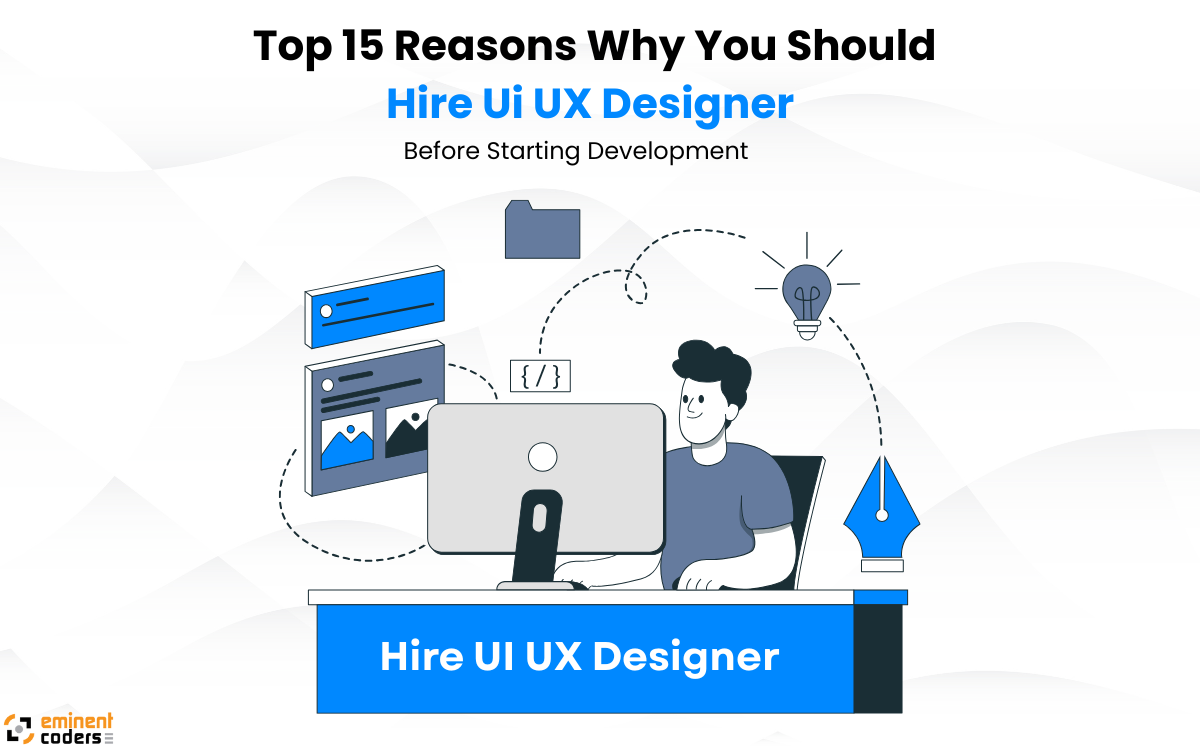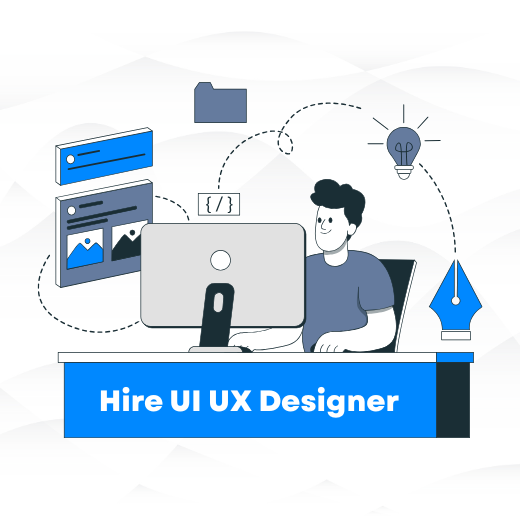Top 15 Reasons Why You Should Hire Ui UX Designer Before Starting Development in 2025

In today’s competitive digital landscape, user experience is everything. A visually stunning website or app that fails to engage users will struggle to convert visitors into customers. That’s why hiring UI UX designer before starting development is one of the smartest investments you can make for your project.
In this blog, we’ll explore 15 compelling reasons why you should hire UI UX designer before writing a single line of code — and how this decision can save you time, money, and headaches later.
Why UI UX Design Matters in 2025
The year 2025 brings new user expectations: faster load times, mobile-first experiences, accessibility compliance, and seamless interfaces. Businesses that prioritize UI/UX design before development gain a competitive edge because they build products that delight users from day one.
Quick Fact: Research shows that every $1 invested in UX results in a return of $100 — that’s a 9,900% ROI (Source: Forrester Research).
If you want to maximize your ROI, consider exploring our UI UX Design and Development Services to see how expert designers can help create user-focused, conversion-driven digital products.
Top 15 Reasons Why You Should Hire UI UX Designer Before Development
1. Clear Project Vision
A UI/UX designer translates your ideas into visual wireframes and prototypes, helping you and your team clearly see the end product before development starts.
2. Cost Savings in the Long Run
Fixing design issues during development is 10x more expensive than fixing them during the design phase. Early design prevents costly rework.
3. Improved User Experience
UI/UX designers focus on user research, personas, and journey mapping to ensure your product solves real user problems effectively.
4. Faster Development Process
When developers have a clear design roadmap, they can code faster and more accurately — avoiding confusion and back-and-forth changes.
5. Reduced Risk of Scope Creep
Well-defined wireframes and mockups eliminate ambiguity, keeping the project within budget and timeline.
6. Better First Impressions
Your website or app has just 7 seconds to capture a visitor’s attention. A professionally designed UI ensures you make a lasting impression.
7. Higher Conversion Rates
Strategic design elements — like CTA placement, color psychology, and intuitive navigation — lead to higher engagement and conversions.
8. Consistent Branding
A UI/UX designer ensures that your website or app maintains consistent colors, typography, and brand elements, reinforcing brand identity.
9. Mobile-First Approach
With the majority of users browsing on smartphones, designers prioritize responsive and mobile-friendly layouts to maximize accessibility.
10. Accessibility Compliance
A good designer ensures your product follows WCAG guidelines, making it accessible to users with disabilities — an important factor in 2025.
11. Competitive Advantage
An intuitive, beautiful interface can set you apart from competitors who ignore UI/UX design and rely on generic layouts.
12. Better Communication Between Teams
UI/UX designers act as a bridge between stakeholders, developers, and marketers, ensuring everyone is aligned on the project vision.
13. Early User Testing
Designers can create clickable prototypes to gather user feedback before development, helping refine the product early.
14. Increased Customer Retention
A well-designed user experience encourages users to stay longer and come back, improving customer loyalty and LTV (lifetime value).
15. Scalability and Future Growth
UI/UX designers think ahead, creating scalable design systems that make future feature updates and product iterations seamless.
Quick Tips Before You Hire a UI/UX Designer
- Check Their Portfolio: Look for designs that align with your brand style.
- Ask About Their Process: A good designer follows a structured approach — research, wireframing, prototyping, and usability testing.
- Prioritize Communication Skills: Designers should explain concepts clearly to developers and stakeholders.
- Look for Tool Expertise: Figma, Adobe XD, Sketch, InVision, and usability testing tools.
FAQs About Hiring a UI/UX Designer
1. Why should I hire a UI/UX designer before development?
Hiring a designer early ensures a clear project vision, reduces development time, and prevents costly redesigns later.
2. How much does it cost to hire a UI/UX designer?
Costs vary based on experience and location. On average:
1. Freelancers: $20–$75/hour
2. Agencies: $2,000–$10,000+ per project
Hiring early often saves money by preventing expensive development fixes.
3. Can a developer handle design instead of hiring a UI/UX designer?
While some developers have design skills, professional UI/UX designers are trained to focus on user experience, psychology, and usability — something most developers are not specialized in.
4. How long does the UI/UX design process take?
Depending on project complexity, it can take 2–8 weeks for research, wireframing, prototyping, and user testing before development begins.
5. Do UI/UX designers also handle branding?
Many UI/UX designers can create brand style guides and ensure consistent use of logos, colors, and typography across your digital product.
6. What tools do UI/UX designers use in 2025?
Popular tools include Figma, Adobe XD, Sketch, Axure, and InVision for collaboration, prototyping, and design systems.
7. Is hiring a UI/UX designer worth it for small startups?
Yes! Even startups benefit from great design. A polished UI/UX can help secure funding, attract early users, and position your brand as professional.
Final Thoughts
Your website or app is often the first point of contact between your business and your audience. Investing in UI/UX design before development ensures that you launch a product that is intuitive, engaging, and ready to scale.
Choosing to hire a UI/UX designer is not an expense — it’s an investment that pays dividends in user satisfaction, conversion rates, and long-term growth.
For a professional, end-to-end approach, check out our UI UX Design and Development Services to create user-centric, conversion-optimized digital products.






